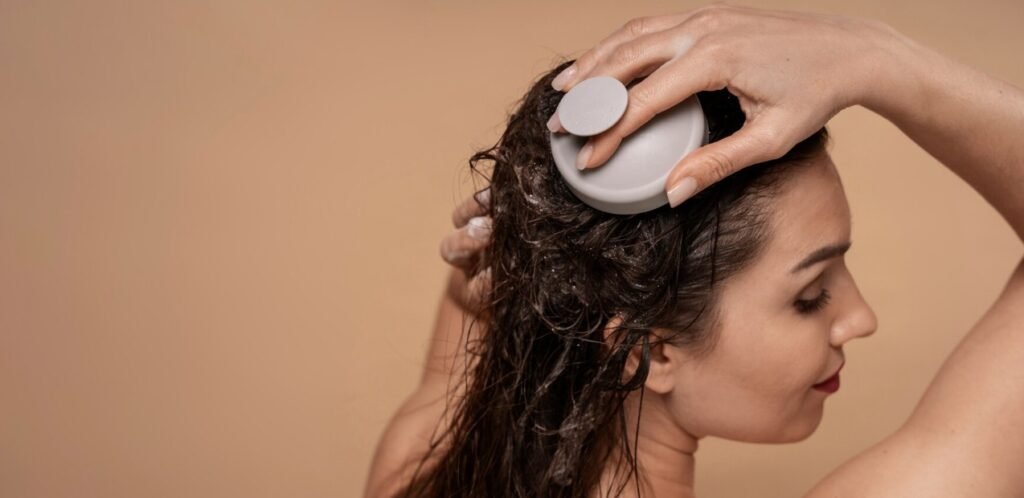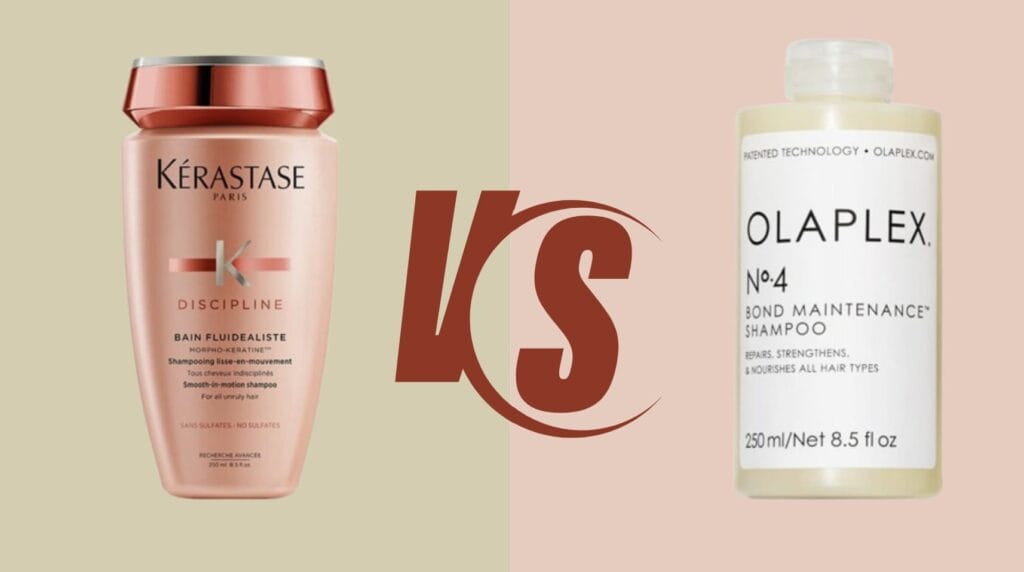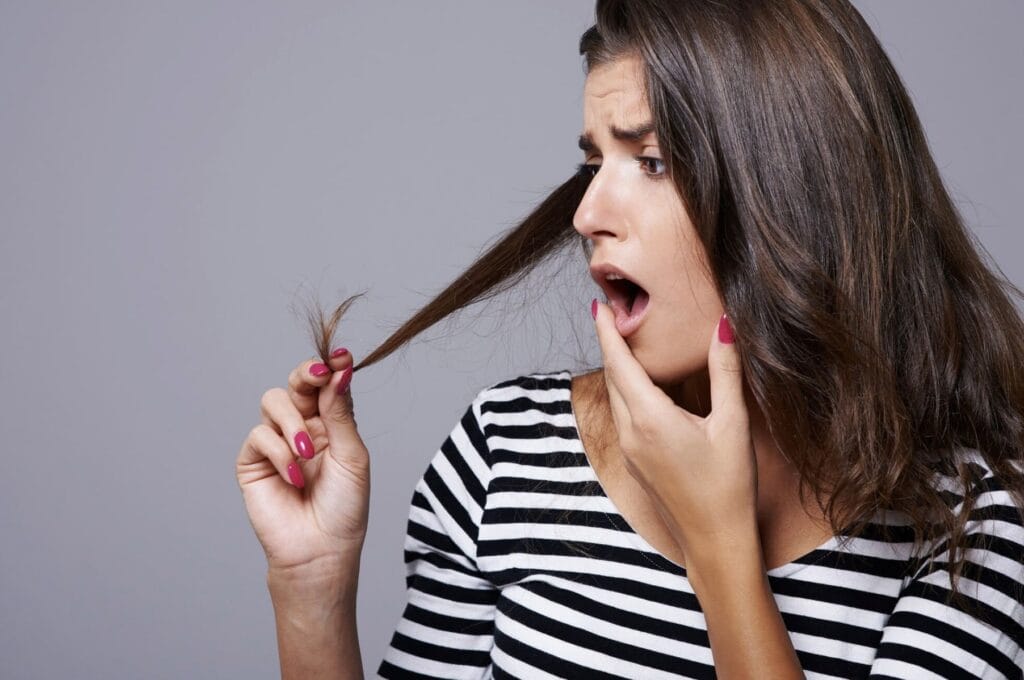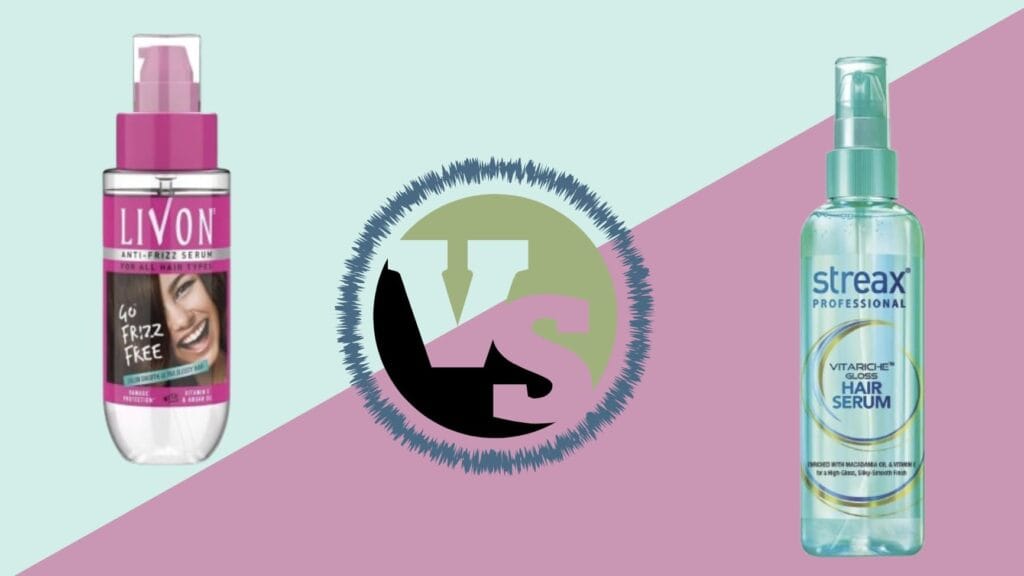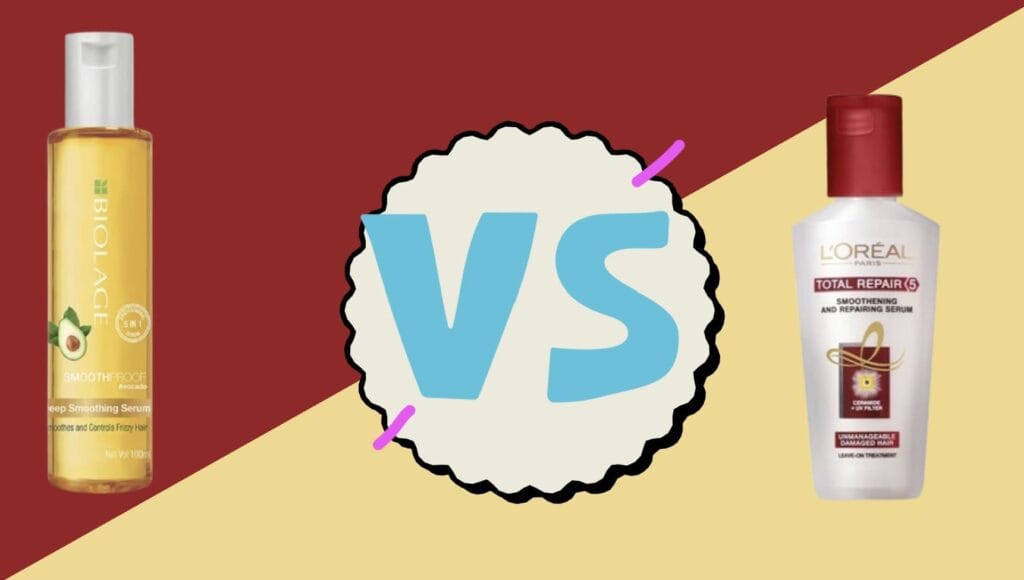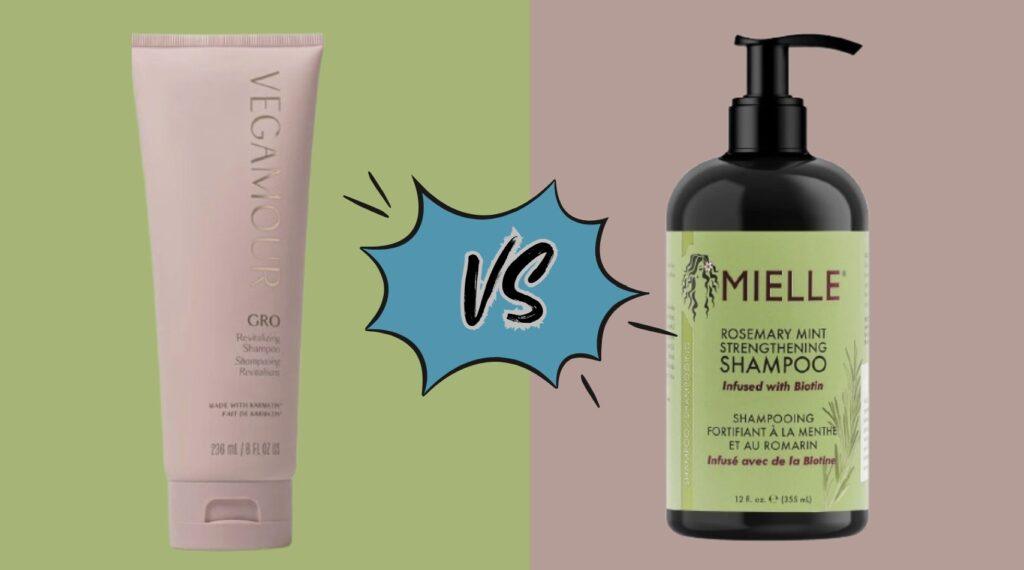How to get more healthy hair starts by learning one important thing about your hair porosity, this will help you understand how your hair absorbs and holds moisture.
The first steps to hair care are to identify the unique properties of your hair. The key factor here is hair porosity. This might sound a bit technical, but really just a term to help clarify what you may or may not understand in terms of your hair absorbing moisture and whether or not it holds onto that moisture. The better you understand hair porosity, the more equipped you’ll be to tailor your hair care regimen to your individual needs and keep your locks looking their best.
So, in this article, we will talk about the different hair porosity types, how to find out about your hair porosity, and some best practices of moisture retention in hair. To learn more about how to get beautiful tresses, read our article on how to get healthy hair the natural way.
What is Hair Porosity?
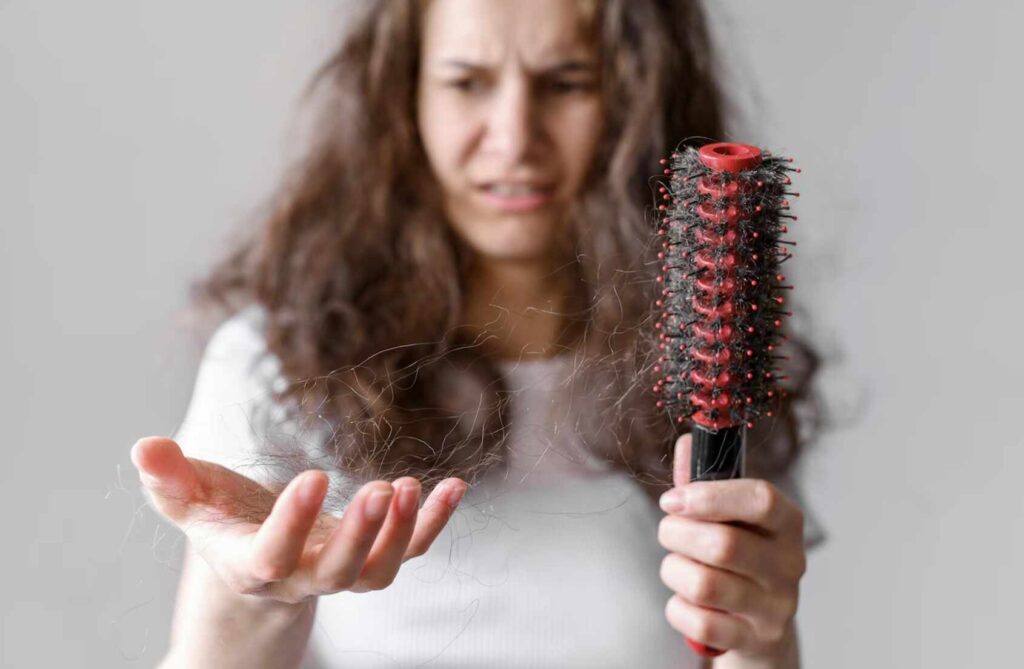
Hair porosity is your hair’s ability to absorb and hold on to moisture. It’s governed by the health of your hair cuticles, the outer layer of hair strands. Imagine cuticles like tiny scales — they open and close. Your hair can easily absorb moisture, but just as easily, lose it — when they are raised. On the flip side, when your cuticles are tightly closed, your hair has difficulty absorbing moisture, leading to dryness.
Inherent in effective hair care is knowledge of your absorption rate of hair. How High Hair Porosity is it?There are three types of hair porosity: low, medium (normal), and high. All have their own characteristics and require different caring for them.
The Three Hair Porosity Types
1. Low Porosity Hair
Low porosity hair is resistant to moisture due to its tight-knit cuticles. This means that although your hair is hard to product the first time, it retains moisture well once it’s in. If you have low porosity hair, you may notice that products sit on top of the hair instead of penetrating it.
Low porosity hair needs light-weight products, as well as heat to help open those cuticles for better absorption. That’s where a protein treatment for hair can be useful: It’ll help strengthen your strands without making them heavy.
Signs of Low Porosity Hair:
- Products are heavy and greasy.
- It takes a long time for hair to dry.
- Your hair repels water, making it bead up on the surface.
2. Medium Porosity Hair
Often considered the best type is medium porosity hair. Cuticles are neither too tight nor too loose, helps hair absorb at a balanced speed. So your head of hair can soak up moisture easily and hold it in without ever feeling too dry or greasy.
Lucky you if you have medium porosity hair! Most products should work fine for you, but you still need to have a good moisture and protein balance. protein treatment for hair can be given regularly to keep the strands healthy and strong.
Signs of Medium Porosity Hair:
- Hair dries at a normal rate.
- It holds styles well.
- There are a wide range of products that you will be able to use without any problems.
3. High Porosity Hair
Hair that falls into the high porosity category has cuticles that are either damage or raised, meaning they absorb a lot of moisture but also lose moisture as quickly. Whether it is due to chemical treatments, heat damage, or environmental factors, this system is suita- ble for the type of hair; in fact, it is frequently discussed, as there are bonuses with a of.
High porosity hair should tentatively focus on sealing moisture in hair. Apply heavier creams and oils to seal in hydration, and consider adding regular protein treatments for hair into the mix to strengthen your strands and help offset damage.
Signs of High Porosity Hair:
- Hair feels dry and brittle.
- Its water retention is relatively high, but it dries out equally fast.
- You may have some frizz or split ends.
How to Play the Hair Porosity Game
Now that you have learned about the different types of hair porosity, you are probably wondering how to find out your own. Luckily, there are a few simple tests you can perform at home.
The Water Test
- Get a clean strand of hair and put it in the glass of water.
- Watch how fast it sinks or floats.
- If it sinks quickly, you probably have high porous hair.
- If it stays afloat for a bit, and then sinks, you have medium porosity hair.
- If it stays on top, you likely have low porosity hair.
The Slip ‘n’ Slide Test
- Grab a piece of hair and run your fingers up the shaft.
- If it feels smooth and gets a little slick, you probably have low porosity hair. If it seems rough and bumpy, you probably have high porosity hair.
The Product Test
- Take a little bit of a product and apply it to a section of your hair.
- If it feels heavy, greasy, and takes forever to dry, your hair is low porosity. If it soaks in, you probably have medium porosity hair. If it absorbs quickly but feels dry, you might have high porosity hair.
Why Does Hair Need to Retain Moisture?

Moisture retention in hair is important no matter what your hair porosity is: Keep using water in your hair-care routine. Your hair appears shinier, and feels softer when it is properly hydrated. Slower, healthier growth over time: retaining moisture properly in your hair is one of the best ways to prevent breakage, frizzy or dull hair, split ends, and the like. So let’s take a closer look at why moisture retention is so important, and how you can do so based on your hair porosity type.
The Importance of Moisture Retention
Reduces Damage: Properly hydrated hair is less susceptible to damage. When your hair is dry, every strand is prone to brittleness and breakage. This is extra crucial for high porosity hair, which can soak up moisture quickly but also lose it just as quickly.
Helps to Manage: Moist hair is more elegant. “Hydrated hair creates pliability and ensuring it is easy to work with when we are curling, straightening and even when brushing,” explains McKee.
Encourages Shine: Well-hydrated hair reflects light better for a natural shine. That shine is especially appealing for low porosity hair, as the product can easily bring out the radiance without weighing it down.
Encourages Healthy Growth: Healthy hair needs to come from the roots. A well-hydrated scalp becomes an easier place for the hair to grow. This is important with any hair type, but especially important for individuals with high porosity hair who might need to take some additinal steps in order to keep hair healthy and scalp happy.
Best Practices for Moisture Retention Based on Hair Porosity
For Low Porosity Hair
Heat Treatment: High temperature can open the cuticles so that the moisture can enter better. Try a plastic cap with a heat towel or hooded dryer when putting on deep conditioners or protein treatments for hair.
Enhances Manageability: So what heavier products you will use for leave-in conditioners and oils? Seek products that have humectants such as glycerin, which draw moisture into the hair without being overly heavy.
Avoid Rich creams: When it comes to styling products for oily hair, skip heavy creams and butters that sit on the hair surface. Instead, use products that can penetrate the hair shaft.
For Medium Porosity Hair
Balanced Products: As medium porosity hair can cope with a wide range of products, feel free to mix both moisture and protein-rich products. Seek out products that provide both in moderation.
Regular Deep Conditioning: Add deep conditioning treatments to your regimen to lock in moisture. It will keep your hair healthy and prevent it from shifting to high porosity.
Hydrate: Provide moisture to your hair frequently, while you stay in a dry climate or if you use heat styling tools often.
For High Porosity Hair
Moisture Locking: Concentrate on hydrating hair post wash. Seal with dense oils, such as castor oil or shea butter, to retain moisture. This is important in order to avoid moisture loss.
Use Protein Treatments: Regularly use protein treatments for hair. These formulas can also fill in gaps in your hair cuticle, which can help strengthen your strands and lower porosity in the long run.
Limit Washes: Washing our already dry high porosity hair frequently will only lead to more dryness. As per the articles, the best way to keep your hair clean is to limit washing ~ 1-2times a week and to use a sulfate-free shampoo so that your hair doesn’t lose its natural oils.
The Role of Protein Treatments in Hair Care
If you have high porosity hair, protein treatments for hair, help keep your strands healthy. These treatments are designed to naturally coat the hair, filling in any gaps in the hair cuticle, so that the hair itself is better protected from damage.
When Should You Use Protein Treatments
Signs of Damage: If your hair is weak, limp or excessively split, it may need a protein treatment. This is particularly important for those with high porosity hair, who can gain huge advantages from added strength.
After Chemical Treatments: If you colored or chemically treated your hair recently, a protein treatment can help restore at least some of the strength that may have been lost in the process.
Regular maintenance: Even if your hair isn’t currently damaged, using a protein treatment every 4-6 weeks can continue to promote healthy hair.
Choosing the Right Protein Treatment
Type of Protein: Seek out treatments with hydrolyzed proteins since they are smaller and can more deeply penetrate the hair shaft.
Balance with Moisture: Protein treatments are no goodness if they are not balanced out with moisturizing products. Excess protein can cause dryness, so always follow up with a deep conditioner to bring back moisture.
DIY Protein Treatments: For a more natural option, you can also try DIY protein treatments with egg, yogurt, or avocado. They can offer a healthy lift minus the aggressive chemicals.
Conclusion: Embrace Your Hair Porosity
Finding out your hair porosity is the first step in the journey to beautiful and healthy hair. The bottom line: Knowing your specific absorption rate of hair allows you to choose products and techniques that will work best for you. And no matter the type of porosity you have — low, medium, or high — there are specific things you can do to improve moisture retention in your mane and leave it looking healthy.
Treating for healthy hair is not one size fits all! This is a work in progress, and you need to be patient, experiment and be flexible with your routine as your hair goes through multiple phases. Focusing on the right products, regular protein treatments for hair, and sealing moisture in hair is the ultimate way of unlocking your roots.
So go ahead and figure out your hair porosity, invest in your hair care and rock the unique beauty of your hair. You should invest in the correct knowledge and tools to achieve your dream goal of perfect hair care! Happy hair care!
FAQs
Is there a home test for hair porosity?
Plunk a clean strand of hair into a glass of water. If it sinks right away, you have high porosity; if it floats for a bit and then goes halfway down, then you have medium porosity; and if it just sits on top, then you have low porosity.”
Why does the porosity of your hair matter?
Knowing your porosity will aid in the selection of products. Low porosity requires lightweight, water-based maintenance; medium, low-maintenance; high porcelain rich, moisture-sealing treatments.”
Is it possible to change my hair porosity?
Porosity can be permanently altered, but damage to hair from heat or chemicals can raise its porosity. Good care, such as deep conditioning and protective styling, can control it just fine.

